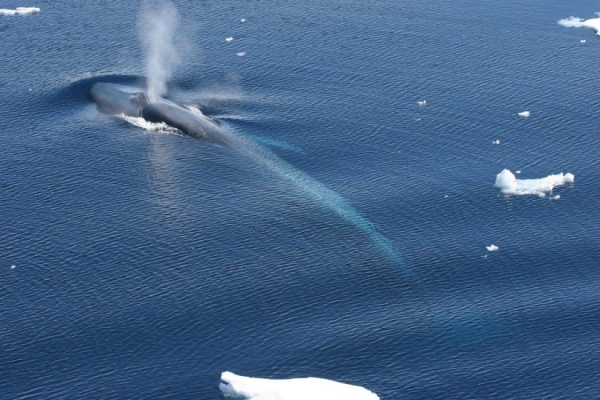Hunted nearly to extinction during 20th century whaling, the world’s largest animal, the Antarctic blue whale, went from a population size of roughly 200,000 to little more than 300. The most recent abundance estimate in 2004 put Antarctic blue whales at less than 1% of their pre-whaling levels.
But is this population recovering? Is there just one population of Antarctic blue whales, or multiple? Why do these questions matter for conservation?
Zoe Rand, a PhD student in the UW Quantitative Ecology & Resource Management program (QERM), is tackling these questions in a new study, published in Endangered Species Research on November 14, 2024. Building on the last assessment of Antarctic blue whales in 2004, and using old whaling records which were surprisingly detailed, Zoe has been investigating if there are different populations or one big circumpolar population. Also involved in the study is UW School of Aquatic and Fishery Sciences (SAFS) Professor and Faculty for the QERM Program, Trevor Branch, and Jennifer Jackson from the British Antarctic Survey.
Read more at: University of Washington
Antarctic blue whales are the world’s largest animal, and are still recovering from being hunted nearly to extinction during 20th century whaling. (Photo Credit: Paula Olson)
Sci/Tech Top Stories Wildlife

